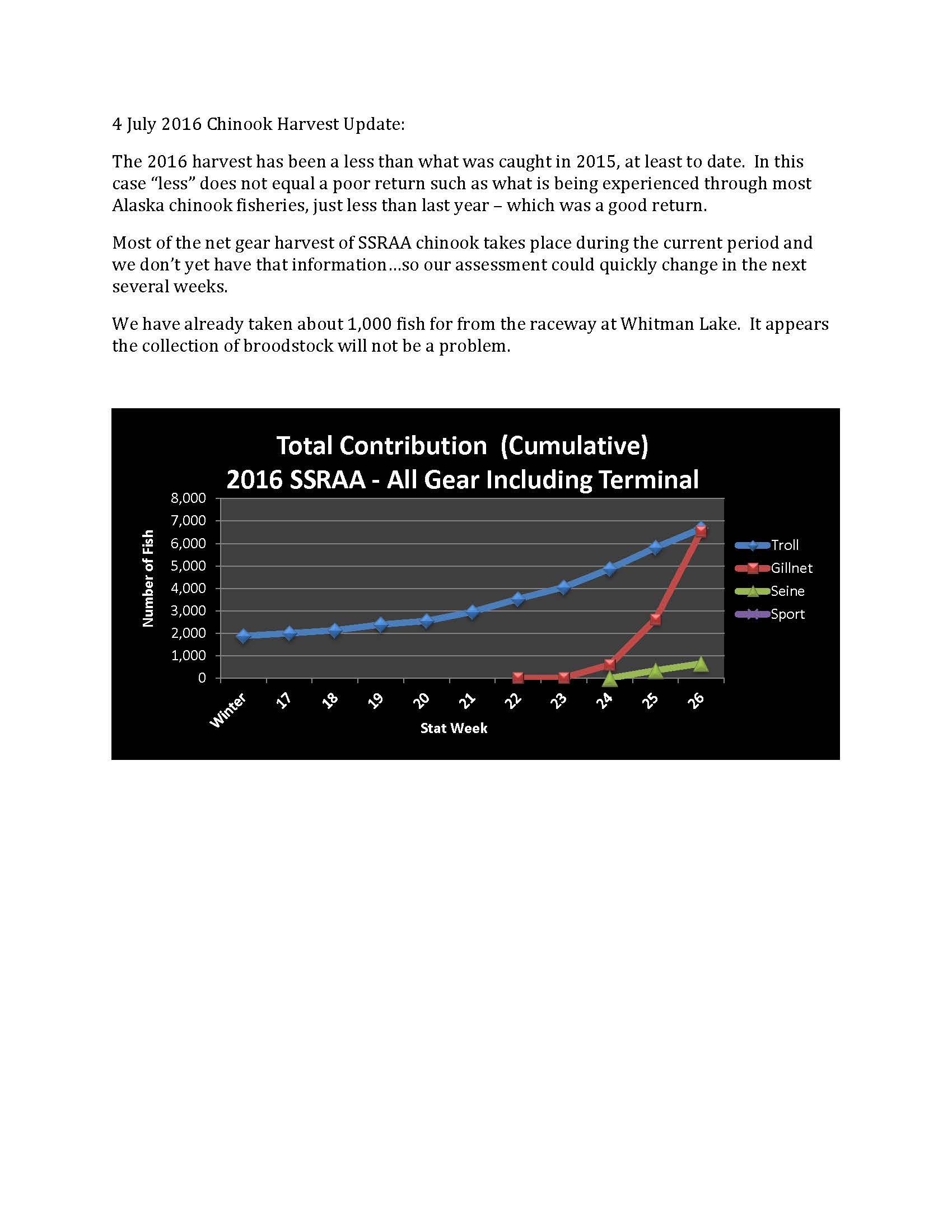09 Jun Chinook Harvest Update 2016

10 June2016 Chinook Harvest Update:
We don’t often try to assess the chinook return until the first of July. While much of the annual harvest has taken place by that time, the data from terminal net fisheries has not been generally available before then. While there is always information about the troll harvest, the troll fishery is not a good annual standard assessment tool. Troll harvest can vary annually by: chinook abundance, opportunity provided by management, effort related to weather and area, price, the cap on spring fisheries, and even politics related to the current situation with the US/Canada Pacific Salmon Treaty. Essentially, every spring troll fishery is a one-of-a-kind opportunity. This spring is no different. A primary factor has been the scarcity of opportunity in the Ketchikan area, because of the relative abundances of Alaska hatchery and treaty chinook; not a high enough percentage of Alaska hatchery fish. That has just changed, but the effect isn’t in the data as yet.
So, regardless of the uncertainty in trying to compare years…we’ll go out on a limb and say this year’s chinook return is good, falling in line with the past several years. Troll harvest, through stat week 23, despite the constraints mentioned above, is in line with the past several years. The larest harvest weeks are the next three, stat week 24 through 26, which will cap the troll harvest and bring the terminal net harvest into the dataset.
We have very little hard information from our program. A handful of fish have already entered the raceways at Whitman Lake. This is early. It doesn’t mean the run is early, at this point it only means some fish have come back early. But, it is not a bad sign going forward. This means there should be some chinook in the Neets Bay SHA and they should soon be showing in the Anita Bay SHA. We will present the terminal harvest information as soon as that is available from ADF&G.
The Neets Bay release is most often the largest contributor to the troll fishery. It looks as if that will prove true this year. The Anita Bay release has shown the best survival the past several years, but these fish go more to the net fleets and won’t show as quickly on the attached graphics.
We’ll try to update this information weekly, as we are able – when we receive new information.


